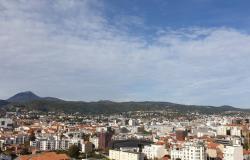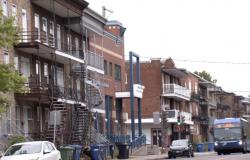On the eve of their graduation, many graduates of the bachelor’s degree in visual and media arts, particularly in the practical artistic profile, feel poorly equipped for the “self-employed” aspect of the artistic profession. “It’s as if someone had me pitched in the void,” says a graduate.
Marie-Laurence Lussier graduated last fall from a bachelor’s degree in visual and media arts with the ambition of teaching at the college level in visual arts. To become a CEGEP teacher, she must first develop an artistic career, something which turns out to be more difficult than expected.
Marie-Laurence mainly practices ceramics and oil painting. However, in Montreal, few places have ceramic kilns where she can create her works. The same goes for the ventilation systems, necessary for his practice of oil painting.
When she graduated from her baccalaureate last fall, she suddenly lost access to the UQAM workshops where several mediums were available to her. “Visual arts graduates are completely left to their own devices,” she believes. In his opinion, the program’s curriculum is partly to blame for this lack of preparation for the job market. “I don’t feel that at UQAM I learned the self-employed aspect of being an artist,” she admits.
Lili-Anne Malo, graduating from the baccalaureate in visual and media arts, shares this opinion: we should focus more on the “managerial” aspect.
“Learning how to manage yourself as an independent artist and everything that involves salary is something that is missing. »
Lili-Anne Malo, graduate of the bachelor’s degree in visual and media arts
This is a feeling shared by other students met by the Montreal Campusbut who preferred not to testify.
A reform in sight
Manon De Pauw, director of undergraduate visual arts programs, says she listens to students’ concerns. This is why she and a committee are looking into the question of baccalaureate reform. “We are in the process of reviewing the progression grid, changing certain courses and integrating this professional aspect into a course which will probably be called “Portfolio”, because that is one of the students’ requests,” she explains, in emphasizing the importance of a portfolio for integration into the professional environment.
According to Marie-Laurence Lussier and Lili-Anne Malo, this is a step in the right direction. “It would have to come much earlier in our journey. Concretely, we learned to write artistic approach texts in the last class [du baccalauréat] », Regrets Marie-Laurence. An artistic approach text is essential to the work of an independent artist, explains Professor Manon De Pauw. This allows you, for example, to apply for a grant from the Canada Council for the Arts.
Different exit doors
Lili-Anne Malo has just graduated from a bachelor’s degree in visual and media arts. His plans for the future? A master’s degree in cultural business management from HEC. For Lili-Anne, it was the “logical continuation” after the baccalaureate; a vision shared by several students who will continue their master’s journey. “Generally, there are four paths: becoming an independent artist, teaching, becoming a curator or working on the conservation of works,” notes the graduate.
Professor Manon de Pauw herself graduated with a bachelor’s degree in visual arts at Concordia University in 1997. At the end of her studies, she integrated into the world of artist centers where she became a cultural worker for a few years. “Being an artist is not a comfortable life in general. I know very few people who make a living solely from their art, especially today. This is why you need to equip yourself in different areas,” explains Manon De Pauw.
This is the choice that Marie-Laurence Lussier made by focusing on training as a stage technician, which keeps her more busy during the summer, the festival period. Her colleague Lili-Anne Malo works in catering. Many people have to finance their art through outside employment, notes the graduate.
Leave the academic environment
Several exhibitions, excellence scholarships and internships with artists are offered to students in the UQAM program, says Manon De Pauw. According to the professor, the lasting partnership between the Galerie de l’UQAM and Place des Arts or other more one-off partnerships, such as that with Jeanne-Mance habitations, allows students visibility and exposure in a context outside UQAM. “These kinds of experiences allow students to escape from the academic environment,” she adds. These experiences imitate the specific constraints that an artist encounters in the job market, which is very professionalizing, in his opinion.
Both Marie-Laurence Lussier and Lili-Anne Malo recognize the importance of these resources in their journey. This year’s graduate exhibition, Collective departure, was significant for Lili-Anne. “Even though we had to finance our own final exhibition, because we had a budget of only $80, I am really proud of the result,” she says.
For Marie-Laurence Lussier, it was the internship experience that was particularly meaningful. In his opinion, adding visits to artists’ studios or even meetings with artist centers would be essential, without putting aside the importance of academic achievements.
According to Lili-Anne Malo, certain practical and theoretical aspects should be combined in the same course. “I would have loved to try and learn oil painting, but there were no courses to learn how to do it. It’s mostly “manage yourself, we’ll see what you do”,” she sums up. In his opinion, the bachelor’s degree in visual and media arts must offer equal space to theoretical learning, particularly through art history courses, as well as to learning various artistic mediums.






